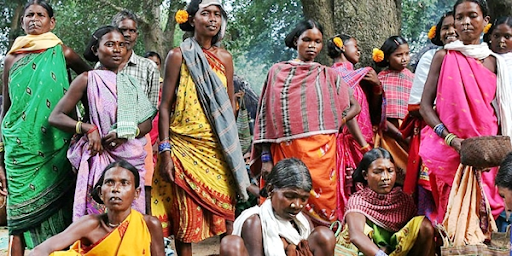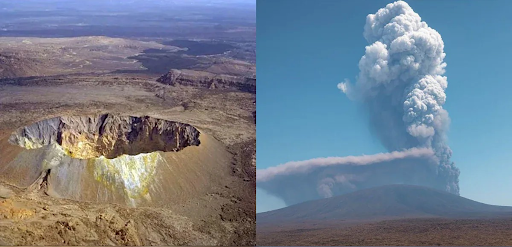



They are an indigenous tribe found in the Chhotanagpur Plateau, which includes Jharkhand, Bihar, Odisha, West Bengal, Madhya Pradesh, Tripura, and Bangladesh.

Copyright infringement not intended
Source: Art and Culture
Munda tribals from Similipal Tiger Reserve (STR), Odisha, protested being denied access to their sacred groves, which have been converted into a tiger enclosure for translocated tigress Zeenat.
|
Aspect |
Details |
|
Clan System |
Patrilineal clans (Killi), believed to descend from a common ancestor. |
|
Traditional Occupation |
Originally hunter-gatherers; later turned farmers. Skilled in weaving and basket-making. |
|
Sacred Groves & Rituals |
Nature worshippers practicing animism; sacred rites are conducted at burial sites. |
|
Folk Music & Dance |
Celebrate festivals like Sarhul and Karam with traditional songs and dances. |
|
Totemic Beliefs |
Each clan is associated with a totemic animal or plant that symbolizes clan identity. |
Source: Indian Express
|
Practice Question: Q. Which of the following statements about the Munda tribe is/are correct? The Munda tribe primarily inhabits the Chotanagpur plateau region. Birsa Munda led the Ulgulan movement against British colonial rule. The Munda tribe follows a matrilineal system of inheritance. Select the correct answer using the code given below: A) 1 and 2 only B) 2 and 3 only C) 1 and 3 only D) 1, 2 and 3 Answer: A) 1 and 2 only Explanation: Statement 1 – Correct: The Munda tribe primarily resides in Jharkhand, especially in the Chotanagpur plateau region. Statement 2 – Correct: Birsa Munda was a prominent tribal freedom fighter who led the Ulgulan (Great Tumult) movement in the late 19th century against British oppression. Statement 3 – Incorrect: The Munda tribe follows a patrilineal system, not a matrilineal one. |







© 2025 iasgyan. All right reserved